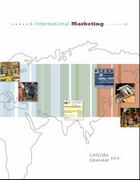Question
Here's the full question: The markup is also the fraction of output that goes to profits, and hence (1 - ) is the fraction of
Here's the full question:
The markup is also the fraction of output that goes to profits, and hence (1 - ) is the fraction of output paid to labor.
c) Recall from lecture and the ppt slides, that the real profit rate (?) is defined as the ratio of real profits per unit of capital (what the owner has invested in the firm).
That is, the real profit rate = where "K" is the amount of capital (equipment and structures) the firm needs to have along with workers in order to produce output. Hence the Real profit rate = = * ( / ) . If one unit of capital (K) has to be combined with one unit of labor (N) to produce output, then we can write the real profit rate as:
=
Here's the question, how does the markup () and hence the real profit rate () vary is the number of firms? Explain fully!
It has a second part where it asks:
d) Given your answer to part c) draw a graph the real profit rate curve that the real profit rate as a function of the number of firms (i.e. draw a graph with the real profit rate on the vertical axis and the # of firms on the horizontal axis). What will cause the real profit rate curve to shift up or shift down?
I'm not sure on how to draw it.
Step by Step Solution
There are 3 Steps involved in it
Step: 1

Get Instant Access to Expert-Tailored Solutions
See step-by-step solutions with expert insights and AI powered tools for academic success
Step: 2

Step: 3

Ace Your Homework with AI
Get the answers you need in no time with our AI-driven, step-by-step assistance
Get Started


